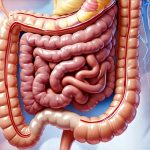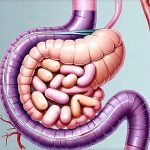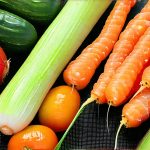Histamine intolerance is a growing concern for many individuals experiencing a wide range of seemingly unrelated symptoms. It’s not an allergy in the traditional sense; rather, it arises from an inability to properly break down histamine within the body, leading to its accumulation and subsequent adverse reactions. This can manifest as everything from skin rashes and digestive issues to headaches, anxiety, and even neurological symptoms. While diagnosis requires medical evaluation, many people find significant relief through dietary modifications – specifically, adopting a low-histamine diet. Understanding what this entails is crucial for anyone considering this approach, as it’s more nuanced than simply eliminating allergenic foods.
The challenge lies in the fact that histamine isn’t just present in certain foods; it forms in food during fermentation, aging, or improper storage. This means freshness becomes paramount, and planning meals requires a mindful awareness of how long food has been sitting. A low-histamine diet is often used as an elimination diet to help identify sensitivities and assess whether histamine truly plays a role in someone’s symptoms. It’s important to emphasize that it’s not necessarily a long-term solution for everyone, but rather a tool for investigation and symptom management, ideally under the guidance of a healthcare professional. This article will explore what you can expect when embarking on this dietary journey, covering food choices, challenges, and practical tips for success.
Understanding Histamine & The Diet’s Principles
Histamine is a naturally occurring chemical involved in many bodily functions, including immunity, digestion, and neurotransmission. Our bodies produce histamine, and we also ingest it through our diet. Normally, the enzyme diamine oxidase (DAO) breaks down ingested histamine, keeping levels balanced. Histamine intolerance occurs when DAO isn’t functioning optimally or when there’s an excessive intake of histamine-rich foods, leading to a buildup that overwhelms the system. Several factors can contribute to reduced DAO activity including genetic predispositions, gut dysbiosis, certain medications (like NSAIDs), and underlying health conditions.
The low-histamine diet isn’t about eliminating all histamine; it’s about reducing the overall load on your body. The core principles revolve around: – Choosing extremely fresh foods – ideally consumed soon after purchase or preparation. – Avoiding fermented, aged, smoked, or pickled foods as these are naturally high in histamine. – Selecting low-histamine alternatives whenever possible. – Paying attention to food storage practices to minimize histamine formation. This requires a shift in shopping habits and meal planning to prioritize freshness over convenience, but the potential benefits for those struggling with histamine intolerance can be substantial.
It’s important to acknowledge that histamine levels vary significantly between individuals and even within the same food depending on its age and preparation method. A food considered low-histamine for one person might trigger symptoms in another. This highlights the need for personalized experimentation, careful observation of your own body’s reactions, and potentially working with a registered dietitian or healthcare provider to tailor the diet to your specific needs. Don’t assume that because something is generally listed as “low histamine” it will be tolerated by you; individual sensitivity plays a huge role. For individuals experiencing digestive issues after surgery, understanding these nuances can be especially important.
Navigating Food Choices: What To Eat & Avoid
A successful low-histamine diet requires a thorough understanding of which foods are typically well-tolerated and which should be avoided or severely limited. Generally, freshly prepared meats and poultry (frozen immediately after slaughter), most fresh vegetables (excluding those listed below as higher histamine producers), rice, quinoa, and some fruits are considered safe choices. However, the devil is in the details. Leftovers, even of low-histamine foods, can accumulate histamine over time, making them problematic for sensitive individuals.
Foods to avoid or limit significantly include: – Fermented foods like sauerkraut, kimchi, yogurt, kefir, kombucha, and vinegar (including balsamic). – Aged cheeses – cheddar, parmesan, brie, etc. – Smoked meats and fish. – Pickled foods. – Alcohol, especially red wine and beer. – Processed meats containing nitrates/nitrites. – Dried fruits – histamine levels increase during drying. – Citrus fruits, tomatoes, spinach, eggplant, avocado (these can be tolerated by some in small amounts). – Shellfish. – Chocolate and cocoa.
The list can seem daunting, but it’s crucial to remember that this is often a temporary elimination diet. The goal isn’t necessarily permanent restriction, but rather identifying your individual triggers and gradually reintroducing foods to determine what you can tolerate. Maintaining a detailed food diary alongside symptom tracking is invaluable during this process. It allows you to pinpoint specific foods causing reactions and adjust your diet accordingly. If you are preparing for a GI procedure, understanding dietary restrictions will be important.
Understanding Freshness & Food Storage
The concept of freshness is absolutely central to the low-histamine diet. Histamine levels increase as food ages, even under refrigeration. This means: – Buying ingredients frequently in small quantities. – Choosing frozen foods immediately after they’ve been frozen (as opposed to those that have thawed and refrozen). – Preparing meals shortly before eating them. – Avoiding leftovers whenever possible; if you must keep leftovers, freeze them immediately and consume within a few days of thawing.
Proper food storage is also key. Airtight containers can help slow histamine formation, but even with proper storage, time remains the enemy. Some individuals find that freezing foods helps to reduce histamine levels (though this isn’t universally agreed upon), while others prefer to avoid frozen foods altogether due to potential issues related to thawing and re-freezing. The key is to experiment and see what works best for you. Consider investing in a vacuum sealer to minimize exposure to oxygen, which can accelerate histamine formation. Taking the time to create a routine that supports these habits will prove beneficial.
Dealing with Cross-Reactivity & Mast Cell Activation
Beyond direct histamine content, cross-reactivity can be a significant issue for some individuals. This occurs when the immune system mistakes proteins in certain foods for similar proteins found in histamine-releasing foods. For example, people sensitive to shellfish may also react to other seafood or even fruits with similar protein structures. Identifying cross-reactive foods often requires careful observation and potentially allergy testing (though standard allergy tests aren’t always reliable for histamine intolerance).
Many individuals with histamine intolerance also experience mast cell activation syndrome (MCAS), a condition where mast cells release excessive amounts of histamine and other mediators, even in the absence of an allergic trigger. This can make dietary management more challenging as symptoms may not be directly linked to food intake. In these cases, addressing MCAS through medical intervention alongside dietary changes is often necessary. It’s important to differentiate between histamine intolerance and MCAS; one is a digestive issue while the other involves immune system dysfunction. A colonoscopy can help rule out other potential causes of digestive symptoms.
Symptom Tracking & Reintroduction Phase
A successful low-histamine diet isn’t just about what you avoid; it’s about understanding your individual tolerance levels. Keeping a detailed food diary, meticulously recording everything you eat and drink (including portion sizes), is essential. Alongside the food diary, track any symptoms you experience – headaches, digestive issues, skin rashes, anxiety, etc. Note the timing of symptoms relative to food intake to help identify potential triggers.
Once you’ve been on a strict low-histamine diet for several weeks and experienced symptom improvement, you can begin the reintroduction phase. This involves gradually reintroducing foods one at a time, starting with small portions and carefully monitoring your body’s response. Introduce only one new food every 3-4 days to clearly identify any reactions. If a food causes symptoms, remove it from your diet and try again later. The reintroduction phase helps you determine which foods you can tolerate and in what quantities, allowing for a more personalized and sustainable dietary approach. Remember that this process requires patience and self-awareness, but the rewards – improved health and well-being – are worth the effort. If you’re unsure where to start, consider your first 30 days on a gut-healing diet as a foundation. A strong understanding of how to support your body is vital for recovery after digestive procedures. Finally, remember to always ask your doctor if you have questions or concerns.


















